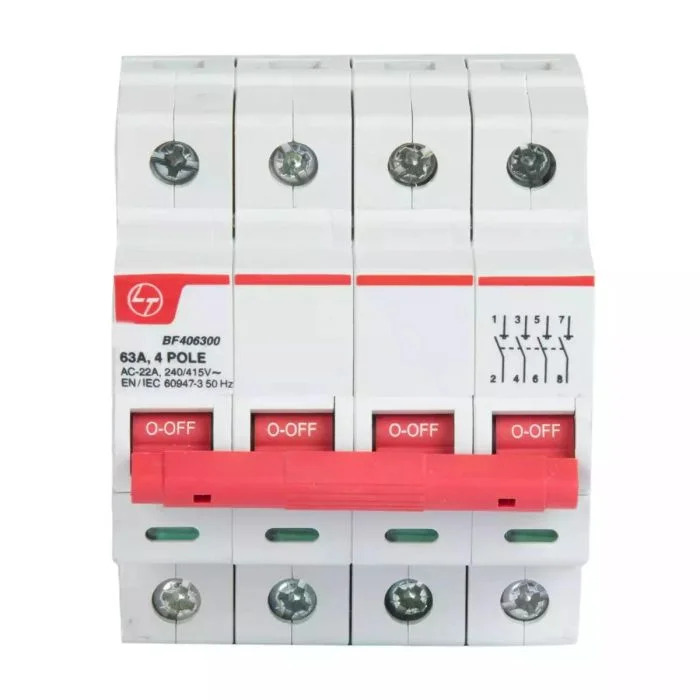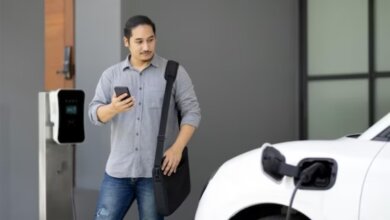Isolator Switch: The Key to Safe Electrical Operations at Home and Work

In today’s fast-paced world, where electricity powers almost every aspect of our lives, ensuring electrical safety is not just a precaution but a necessity. Whether you are managing a residential property, an office space, or an industrial setup, understanding the importance of reliable electrical control mechanisms can make a significant difference in safety and efficiency. Among the many safety components available in the electrical domain, the isolator switch stands out as one of the most critical devices for both home and work environments.
This guide explores the role of an isolator switch, how it functions, and why it is indispensable for your home and workplace safety. We will also discuss its connection with modern electric switch board design for home, ensuring not just functional safety but also aesthetic appeal in residential interiors.

Understanding the Isolator Switch
An isolator switch is an electrical device designed to completely de-energize a circuit for maintenance or emergency purposes. Unlike regular switches that control the flow of electricity during normal operations, isolator switches are specifically intended to disconnect circuits for safety reasons. They act as a visible and reliable separation between a power source and the electrical equipment connected to it.
These switches are often used in both residential and industrial applications to ensure that maintenance personnel can work on equipment without the risk of electric shock. They are a vital part of electrical safety systems, especially in high-power circuits where standard switches may not provide sufficient protection.
Types of Isolator Switches
Understanding the different types of isolator switches can help you choose the right one for your specific requirements.
- Single-Pole Isolator Switch
A single-pole isolator switch is typically used in low-voltage applications, such as residential lighting systems. It isolates a single phase of the electrical circuit and is ideal for smaller loads.
- Double-Pole Isolator Switch
The double-pole isolator switch disconnects both live and neutral wires simultaneously, providing extra safety. These are common in home installations, particularly for high-power appliances like air conditioners or water heaters.
- Three-Pole Isolator Switch
This type of isolator switch is designed for three-phase electrical systems, often found in commercial and industrial setups. It disconnects all three live conductors at once, ensuring maximum safety.
- Four-Pole Isolator Switch
Four-pole isolator switches are used in systems where all phases and the neutral need to be isolated. This is particularly important in complex electrical networks or sensitive equipment installations.
Why the Isolator Switch is Crucial in Homes
For homeowners, installing an isolator switch is not just about compliance with electrical safety standards—it’s about safeguarding lives and property.
- Maintenance Safety
When electricians work on your home’s wiring or appliances, they need a secure way to cut off the power completely. The isolator switch ensures no accidental flow of electricity during repairs.
- Protection from Electrical Hazards
In case of a fault or overload, isolator switches prevent electrical accidents by stopping the power flow instantly. This minimizes the risks of electrocution and electrical fires.
- Appliance Longevity
By isolating power during maintenance or when an appliance is not in use, you protect your devices from unexpected voltage surges or short circuits.
The Role of Isolator Switches in Workplaces
In industrial and commercial settings, the importance of an isolator switch becomes even more critical due to higher voltages, heavier machinery, and more complex electrical systems.
- Compliance with Safety Regulations
Workplaces are legally required to follow strict safety protocols. Isolator switches ensure compliance with occupational safety guidelines and electrical codes.
- Emergency Shut-Down
During emergencies, isolator switches provide a quick method to cut off power to prevent further damage or injury.
- Worker Safety During Maintenance
When technicians are repairing machinery, the isolator switch ensures complete disconnection from the power source, avoiding accidental startups that could cause injuries.
Integrating Isolator Switches into Electric Switch Board Design for Home
While safety is paramount, modern homeowners are equally concerned about aesthetics. An electric switch board design for home can be functional and stylish at the same time, and incorporating isolator switches seamlessly into the design is both possible and advisable.
- Flush-Mounted Designs
Flush-mounted isolator switches blend into the wall, giving a clean, modern look. They can be coordinated with the rest of your switchboard layout for a uniform appearance.
- Modular Switchboards
A modular electric switch board design for home allows you to integrate isolator switches without compromising style. With sleek finishes and customizable panels, these designs are perfect for modern interiors.
- Concealed Wiring
Isolator switches can be integrated into switchboards with concealed wiring systems, ensuring that the safety features don’t disrupt the interior design.
- Smart Technology Integration
Today’s smart homes can feature isolator switches with digital monitoring, allowing you to cut off power remotely or receive alerts in case of faults.
How to Choose the Right Isolator Switch
When selecting an isolator switch, consider the following factors:
- Voltage and Current Rating
Choose a switch that matches your system’s voltage and current requirements. Using the wrong rating can compromise safety.
- Type of Load
Different appliances and machinery require specific types of isolator switches. Consult an electrician to determine the right fit.
- Installation Location
Indoor switches can be more aesthetically integrated, while outdoor installations require weatherproof designs.
- Durability and Build Quality
Opt for switches from reputable manufacturers that meet international safety standards for durability and performance.
Installation and Maintenance Best Practices
Installing an isolator switch is not a DIY job unless you are a qualified electrician. Here are some best practices:
- Professional Installation – Always hire a licensed electrician to ensure proper installation and compliance with regulations.
- Regular Testing – Test your isolator switches periodically to confirm they are functioning correctly.
- Clear Labeling – Label each switch to indicate which circuit or appliance it controls.
- Routine Maintenance – Dust, moisture, and wear can affect performance, so schedule regular inspections.

Common Mistakes to Avoid with Isolator Switches
Even with the best devices, improper use or installation can compromise safety. Avoid these common mistakes:
- Incorrect Rating Selection – Using a lower-rated switch for high-power equipment can lead to overheating and failure.
- Poor Placement – Installing the switch in an inaccessible location can delay emergency responses.
- Neglecting Maintenance – Ignoring routine checks can allow faults to go unnoticed.
Future Trends in Isolator Switch Technology
Technology is evolving, and so are isolator switches. Here’s what’s on the horizon:
- Smart Isolators – Integration with home automation systems for remote control.
- IoT Monitoring – Real-time performance tracking through mobile apps.
- Eco-Friendly Designs – Use of sustainable materials without compromising safety.
Conclusion
The isolator switch is an unsung hero of electrical safety—essential in both homes and workplaces. Beyond just being a safety device, it is an integral part of a well-designed electrical system that ensures smooth maintenance, protects people and equipment, and enhances operational efficiency.
When integrated thoughtfully into a modern electric switch board design for home, an isolator switch offers both protection and style, proving that safety devices don’t have to be visually intrusive.
For those seeking reliable, high-quality electrical components, Lauritz Knudsen Electrical and Automation offers top-of-the-line isolator switches and switchboard solutions that combine safety, innovation, and aesthetic appeal. Their expertise ensures that your home and workplace remain both secure and visually pleasing—bringing peace of mind with every flip of the switch.




